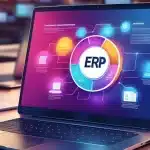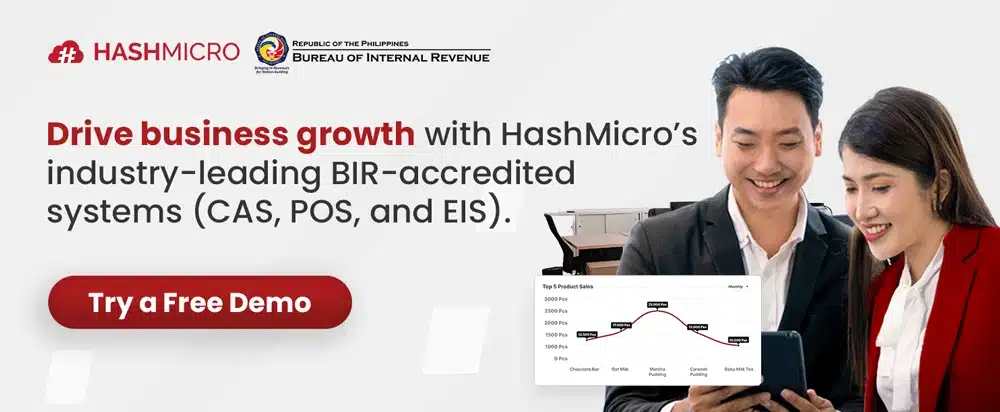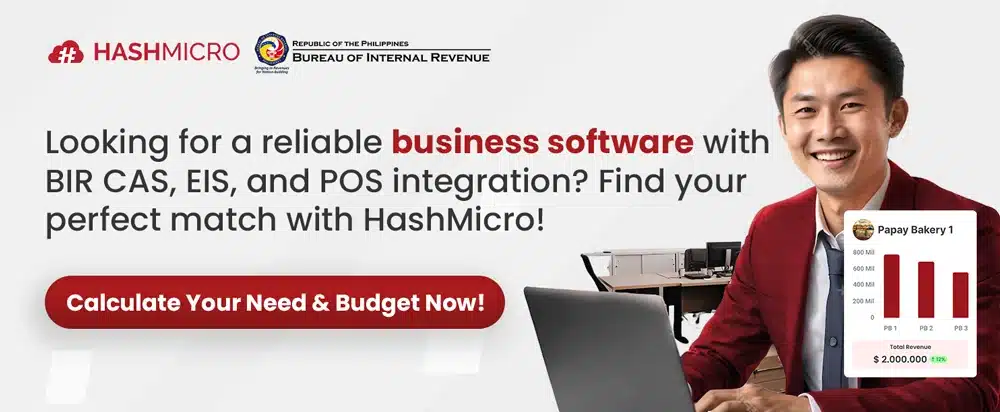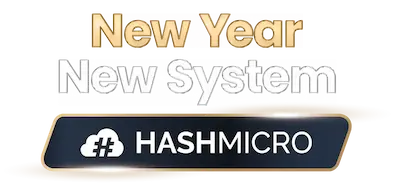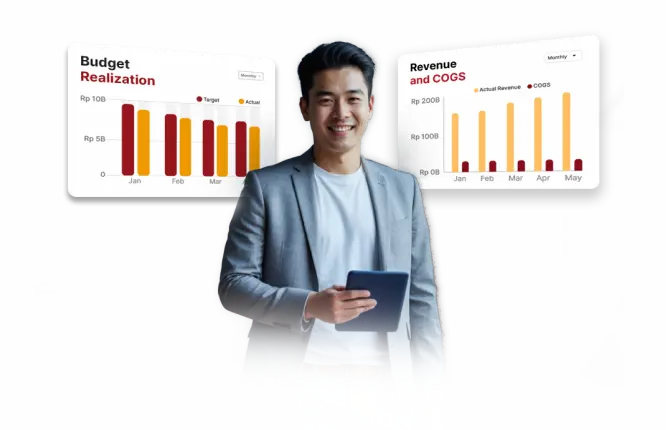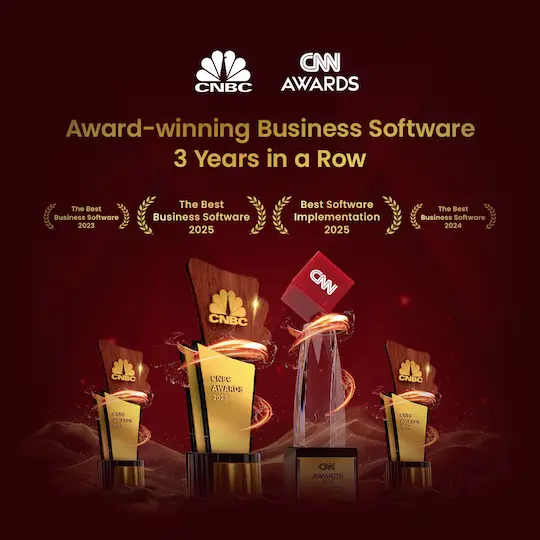Did you know that digital procurement can change how businesses buy things? e-Procurement uses the internet to make buying goods and services easier. It helps companies in the Philippines work more efficiently, save money, and get better at purchasing.
Failing to adopt e-procurement can expose your business to inefficient spending and overlooked opportunities for savings. Because not leveraging digital procurement technologies means missing out on streamlined operations and potential financial advantages.
Huwag kang mag-alala! HashMicro e-Procurement can be the best solution for your business! This software is equipped with advanced features to streamline procurement processes and enhance operational efficiencies, such as budget tracking and limit per purchase to monitor spending and enforce pre-budget limits.
Read on for a comprehensive insight into how HashMicro’s best e-procurement system can help your company successfully operate in today’s market.
Table of Contents
Key Takeaways
|
What is e-Procurement?
E-procurement, also known as electronic procurement, refers to the use of digital systems and technologies to manage the purchasing and procurement process within an organization. It helps businesses buy goods and services online.
It involves the electronic acquisition of goods and services through online platforms, allowing businesses to automate and streamline tasks such as supplier selection, order placement, invoice processing, and payments. It uses the internet to make buying processes easier and faster, moving away from paper tasks. This method lets companies work with their favorite suppliers, handle orders, track deliveries, and make payments smoothly.
This approach brings many advantages to companies. It cuts down on the time and work needed to buy things the old way. By using technology, businesses save money on office work and manage suppliers better. It also improves how they keep track of their inventory, helping them have just the right amount of stock.
Additionally, e-procurement software lets firms look at more products and services from different suppliers. This means they have more options and can find better deals. E-procurement changes the way companies buy things. It makes processes more efficient, saves money, and gives firms an advantage in today’s digital world.
Read also: Purchase Order vs Invoice, What’s the Difference?
How does e-Procurement Work?
e-Procurement modernizes the traditional buying process through the use of digital tools, primarily through an e-Procurement software platform that manages procurement activities. Here’s a step-by-step breakdown of how it works:
- Needs Identification: Determine what the organization requires, identifying the necessary goods or services for effective operations.
- Supplier Selection: Evaluate potential suppliers based on their capabilities, reputation, and pricing to ensure the acquisition of high-quality goods or services at competitive prices.
- Purchase Orders: Utilize the electronic procurement software to create detailed purchase orders, specifying quantities, specifics of the goods or services, and delivery timelines.
- Order Processing: Send the finalized purchase orders to suppliers, who then deliver the requested goods or services according to the agreed schedule.
- Tracking and Management: The e procurement software tracks critical data throughout the procurement process, including supplier information, order details, and payment terms. It provides a comprehensive view of the entire procurement cycle, monitoring order status, verifying deliveries, and ensuring compliance with procurement policies.
- Final Oversight: Oversee the complete procurement cycle from receipt of goods or services to payment, which involves quality checks, invoice processing, and timely payment to suppliers.
The Differences between E-Procurement System and E-Procurement Software
The terms e-Procurement system and e-Procurement software are often used interchangeably, but they refer to slightly different concepts. Here’s a breakdown of the differences:
e-Procurement System:
An e-Procurement system refers to the complete framework or platform that manages the entire electronic procurement process. It is a comprehensive, integrated approach that includes various features such as supplier management, order processing, invoicing, and payment systems, along with workflows and reports.
An e-Procurement system may incorporate multiple software tools (e.g., sourcing, contract management, and inventory integration) and may also include hardware or other technologies to streamline the procurement process across the organization.
- Scope: Encompasses the entire procurement process from sourcing to payment.
- Integration: It may integrate with other business systems like ERP, inventory management, and accounting software.
- Components: Involves multiple tools or modules, including purchase order management, invoicing, supplier management, and reporting.
e-Procurement Software:
e-Procurement software refers specifically to the digital tools or programs used to automate or facilitate procurement processes. It is a piece of software that handles specific tasks like creating purchase orders, processing invoices, managing supplier databases, or providing analytics.
- Scope: Typically refers to a specific software application designed to perform particular functions within the broader e-Procurement process.
- Standalone or Part of a System: Electronic procurement software may be used on its own or as a part of a larger electronic Procurement system.
- Focus: Focused on automating and simplifying certain tasks in the procurement cycle, such as purchase orders or contract management.
Main Features of e-Procurement Systems
e-Procurement systems offer a wide range of features that streamline the procurement process, improve efficiency, and enhance collaboration. Here are some of the main features commonly found in e-Procurement systems:
- Supplier Management: e-Procurement systems allow businesses to manage their supplier database, track supplier performance, and evaluate bids. This feature helps organizations select the best suppliers based on factors like price, quality, and delivery time.
- Purchase Order Management: The system automates the creation, approval, and tracking of purchase orders. This feature ensures accurate and timely orders, reducing errors and the need for manual intervention.
- Invoice Processing and Payment: e-Procurement systems automate the invoice receipt, approval, and payment process. This helps reduce the chances of duplicate payments and errors, while also speeding up the approval cycle for payments.
- Contract Management: e-Procurement systems often include contract management tools, allowing businesses to create, store, and track contracts with suppliers. This helps ensure compliance with agreed-upon terms and conditions and makes it easier to manage renewals or amendments.
- Real-Time Reporting and Analytics: These systems provide dashboards and real-time reports on procurement activities, including purchase orders, supplier performance, and budget tracking. This feature helps businesses make data-driven decisions and identify areas for improvement.
- e-Sourcing and e-Tendering: These features allow organizations to manage their sourcing and tendering processes electronically. Suppliers can submit bids or quotes online, and businesses can evaluate them based on predefined criteria, improving transparency and competitiveness.
- Inventory Management Integration: Many e-Procurement systems integrate with inventory management systems to ensure that stock levels are accurately reflected. This helps organizations avoid overstocking or stockouts and makes the procurement process more efficient.
- Approval Workflows: e-Procurement systems often include automated approval workflows that ensure the right stakeholders approve purchase orders, invoices, and contracts. This streamlines the process and ensures compliance with internal policies.
- Electronic Catalogs: e-Procurement systems often feature online catalogs, where suppliers can list their products and services. This makes it easier for businesses to search for and purchase the items they need while ensuring compliance with preferred suppliers.
Components of e-Procurement System

- Management of Indent: The management of indent deals with making and checking purchase requests. This important step helps organizations figure out what they need. They then ask formally for those goods or services.
- Creating an RFP: Writing a Request For Proposal (RFP) is a key part of e-procurement. It clarifies what the organization wants to buy. This lets possible suppliers understand what’s needed and offer their best proposals.
- Submission of a Bid: When the RFP is out, suppliers send their offers based on the RFP’s details. Their bids show the cost, terms, and how they plan to deliver what’s asked for.
- Opening and Judging of Bids: After collecting bids, organizations look at what’s offered. They compare prices, quality, and how fast suppliers can deliver. This helps them figure out who offers the best deal.
- e-Auction: Sometimes, an e-Auction might be used in buying goods or services. Here, suppliers try to outdo each other online. They aim to give the most attractive prices and contract details.
- Vendor Selection: After looking at bids or e-auction outcomes, the best vendor gets picked. This choice is based on who best fits the organization’s needs. Then, talks continue with the selected vendors.
- Vendor Contract Management: Choosing the vendor leads to contract talks and management. This involves setting all terms, meeting legal needs, and making official agreements. It cements the partnership.
What are the benefits of e-procurement?
The benefits of e-procurement system include revolutionizing traditional procurement practices, and it’s crucial to understand the tangible benefits it brings to organizations. Here are the key advantages that demonstrate why adopting e-procurement is not just beneficial, but essential for modern businesses.
Information transparency
e-Procurement puts all procurement-related data in one place. It’s easy for approved users to see, enhancing transparency. This improves how procurement trends and metrics are reported and analyzed. With access to up-to-date data, organizations can make smarter choices. They can tweak their procurement strategies to get better results.
Cost savings
e-Procurement can save a lot of money. This automated procurement system cuts down manual work and paperwork. This not only saves time but also cuts costs related to manual processing like printing and storing. Electronic procurement also makes it easier for organizations to get better deals from suppliers. This leads to savings when buying goods and services.
Automated procurement process
e-Procurement system makes the procurement cycle more streamlined and efficient. It automates everything from the payment request. This gets rid of time-consuming manual tasks and lowers error risk. With automation, procurement meets organizational rules and happens on time.
Enhanced inventory management
Good inventory management is key for top-notch operations. Electronic procurement makes superior inventory management possible. It lets organizations control and see procurement activities better. This helps track stock levels and monitor how much is used, optimizing inventory costs. Organizations can keep just the right amount of stock and avoid having too much or too little.
Larger product and service selection
Online procurement gives access to more products and services from many suppliers. This helps organizations find the best fit for their needs, whether to save costs, improve quality, or other goals. With more choices, organizations can make better decisions and choose suppliers that offer the best value.
Also read: 12 Best Purchasing Management Software in the Philippines
5 Step Structure Process of Procurement
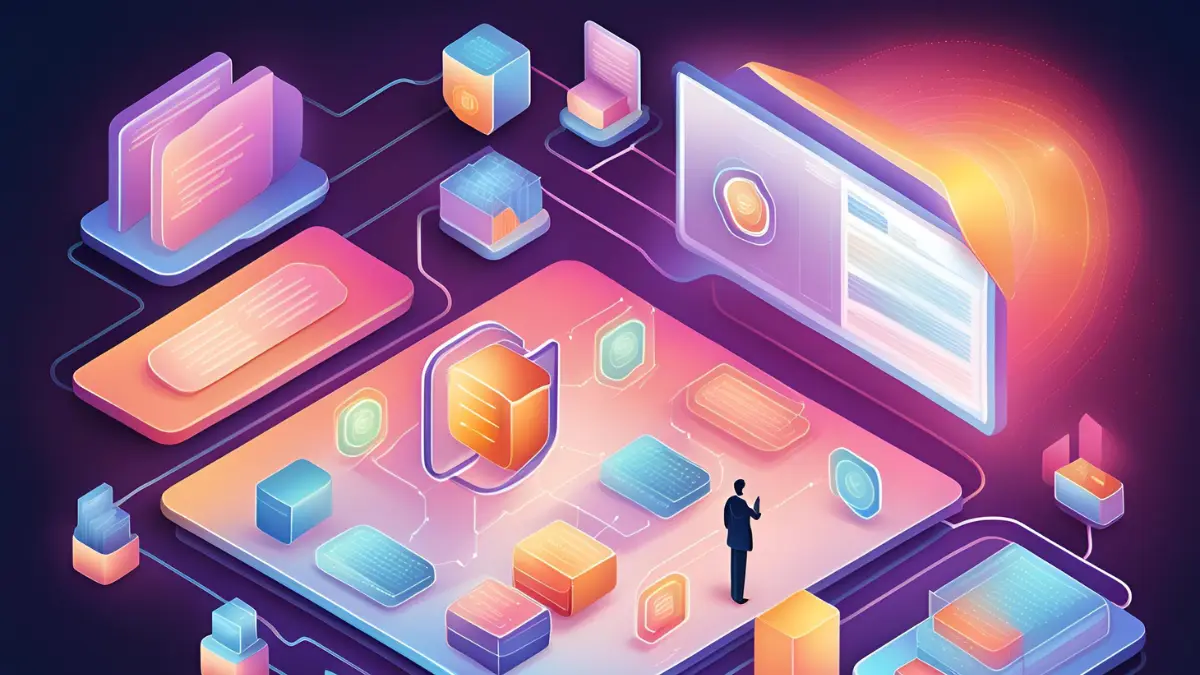
Below, we outline the five essential steps of e-procurement, guiding you through from initial planning to full deployment and optimization.
- Informing: First, organizations let potential suppliers know what they need. They might use Requests For Information (RFI) or do market research.
- Sourcing: Then, they find potential suppliers. They look at who can meet their needs the best.
- Tendering: Next, organizations ask the chosen suppliers for proposals or bids. This helps them compare what’s on offer.
- Auctioning: Sometimes, there’s an auction step. It’s for negotiating prices and terms. E-Auctions help get the best deals.
- Ordering: Last is ordering. The organization picks a supplier, places the order, and oversees the process until delivery and payment.
What are the challenges of e-procurement?
While e-Procurement systems offer significant benefits such as increased efficiency, cost savings, and enhanced transparency, they also come with their own set of challenges. Here are some of the most common challenges businesses face when implementing or managing e-Procurement systems:
- Integration Issues: One of the primary challenges in e-Procurement is integrating the system with existing enterprise systems like ERP, accounting, and inventory management. This can lead to data inconsistencies, delays, and inefficiencies if the systems don’t work seamlessly together.
- User Adoption: Transitioning from traditional procurement methods to a digital platform can be difficult, especially for employees and suppliers who are accustomed to paper-based processes. If the system is not user-friendly or well-supported, resistance to change can slow down implementation and hinder its effectiveness.
- Data Security: Given that e-Procurement involves the sharing of sensitive business and financial data, ensuring robust cybersecurity measures is critical. Companies must protect themselves from potential cyber threats, data breaches, and fraud, which could compromise both the procurement process and their reputation.
- Supplier Participation: Not all suppliers may be ready to adopt e-Procurement systems. Some may lack the necessary technology or simply prefer traditional methods. This can limit the pool of vendors available to the organization, affecting the procurement process and potentially leading to missed opportunities.
- System Customization: Every organization has unique procurement needs, which means e-Procurement systems often require customization. This can be a time-consuming and expensive process that demands technical expertise, making it difficult for some businesses to fully optimize the system for their specific requirements.
- Costs of Implementation: Implementing an e-Procurement system can be costly, particularly for small to medium-sized businesses. The initial investment, along with ongoing maintenance and training expenses, can put a strain on company resources if not carefully planned.
- Compliance Issues: Ensuring that the e-Procurement system complies with both internal policies and external regulations can be challenging. Businesses must ensure that the system can handle the legal and contractual requirements of procurement, which can vary by industry and location.
- Training and Support: Employees need proper training to use the e-Procurement system effectively. Without adequate training and ongoing support, users may struggle to navigate the system, reducing its potential benefits.
- Lack of Standardization: If suppliers are using different procurement systems or platforms, it can create inefficiencies in the process. A lack of standardization can lead to confusion, miscommunications, and delays in order management, making it harder to track deliveries and ensure timely shipments.
HashMicro is the Best e-Procurement Software Solution
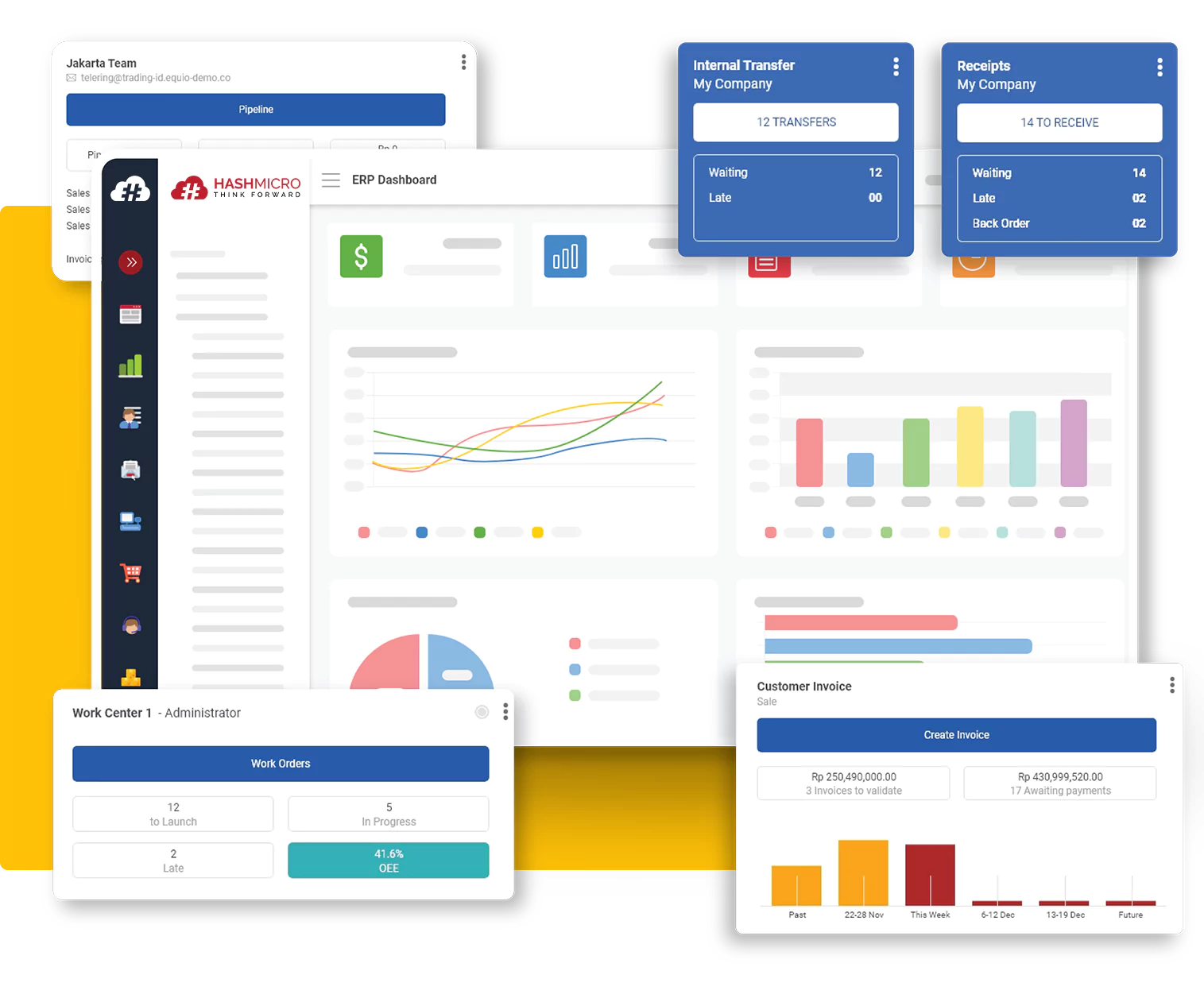
HashMicro e-Procurement software is equipped with advanced features to streamline procurement processes and enhance operational efficiencies, which include:
- Automatic Vendor Rating: Automatically evaluates vendors based on punctuality, pricing compared to other vendors, and the completeness of deliveries, ensuring that businesses partner with the best suppliers.
- Budget Tracking & Limit Per Purchase: Monitors spending and enforces pre-set budget limits per purchase to maintain financial control.
- Multi RFQ Comparison: Facilitates the comparison of multiple Requests for Quotations (RFQs), allowing businesses to assess and select the best offer effectively.
- Service Work Order Tracking: Tracks and manages service-based work orders throughout their lifecycle, ensuring timely completion and compliance with terms.
- Multi Purchase Model: Supports various purchasing models including products, services, assets, and rentals, providing versatility across different types of procurement needs.
- In-Depth Purchase Analysis: Offers detailed insights into procurement trends such as frequently bought products, preferred vendors, and average price per product, enabling informed decision-making.
- Direct Purchase Management: Streamlines the process of direct purchases, reducing time and improving efficiency for straightforward transactions.
- OCR for RFQ: Utilizes Optical Character Recognition technology to automate the extraction and processing of data from RFQ documents, enhancing accuracy and speed.
With these features, HashMicro empowers companies to optimize their procurement strategies, improve vendor relationships, and achieve significant cost savings.
If you’re looking to streamline your procurement processes, HashMicro’s Software might be worth exploring. For a more efficient and error-free procurement experience, click the banner below to discover how this solution could benefit your business.
Conclusion
The adoption of e-procurement is critical for businesses seeking to streamline their procurement processes, enhance transparency, and achieve cost efficiencies. Effective e-procurement solutions not only simplify the acquisition of goods and services but also provide essential analytics that support strategic decision-making and resource management.
Choosing the right and the best e-procurement software is crucial as it becomes the backbone of a company’s purchasing strategy. The ideal solution should offer comprehensive features that cater to specific business needs, support scalability, and provide reliable after-sales service.
For businesses in the Philippines looking for a robust e-procurement system, HashMicro stands out as one of the best options. Known for its adaptability, extensive client base, and strong support structure, HashMicro’s AI procurement software can transform your procurement processes. Get the chance to try the free demo now!








